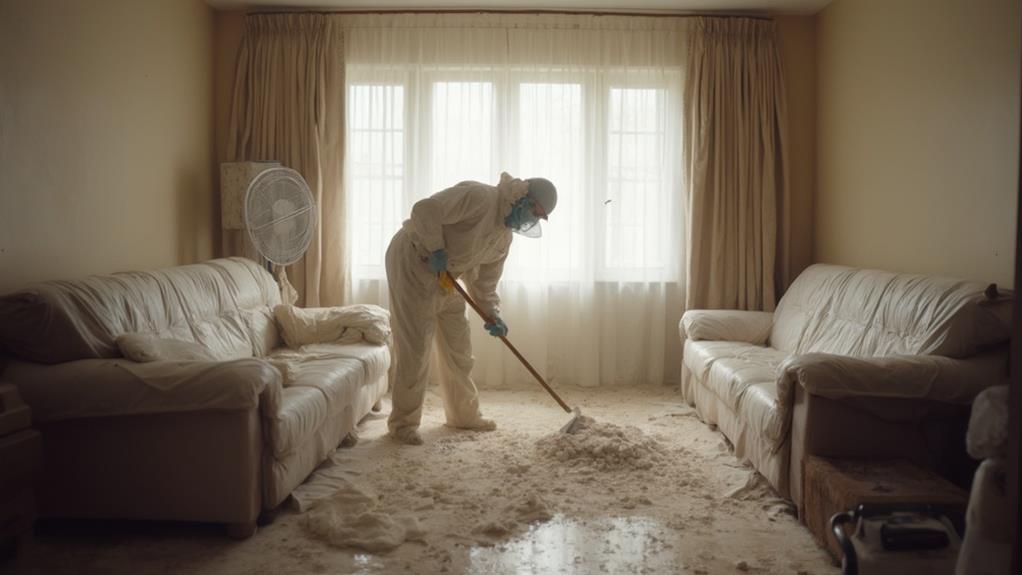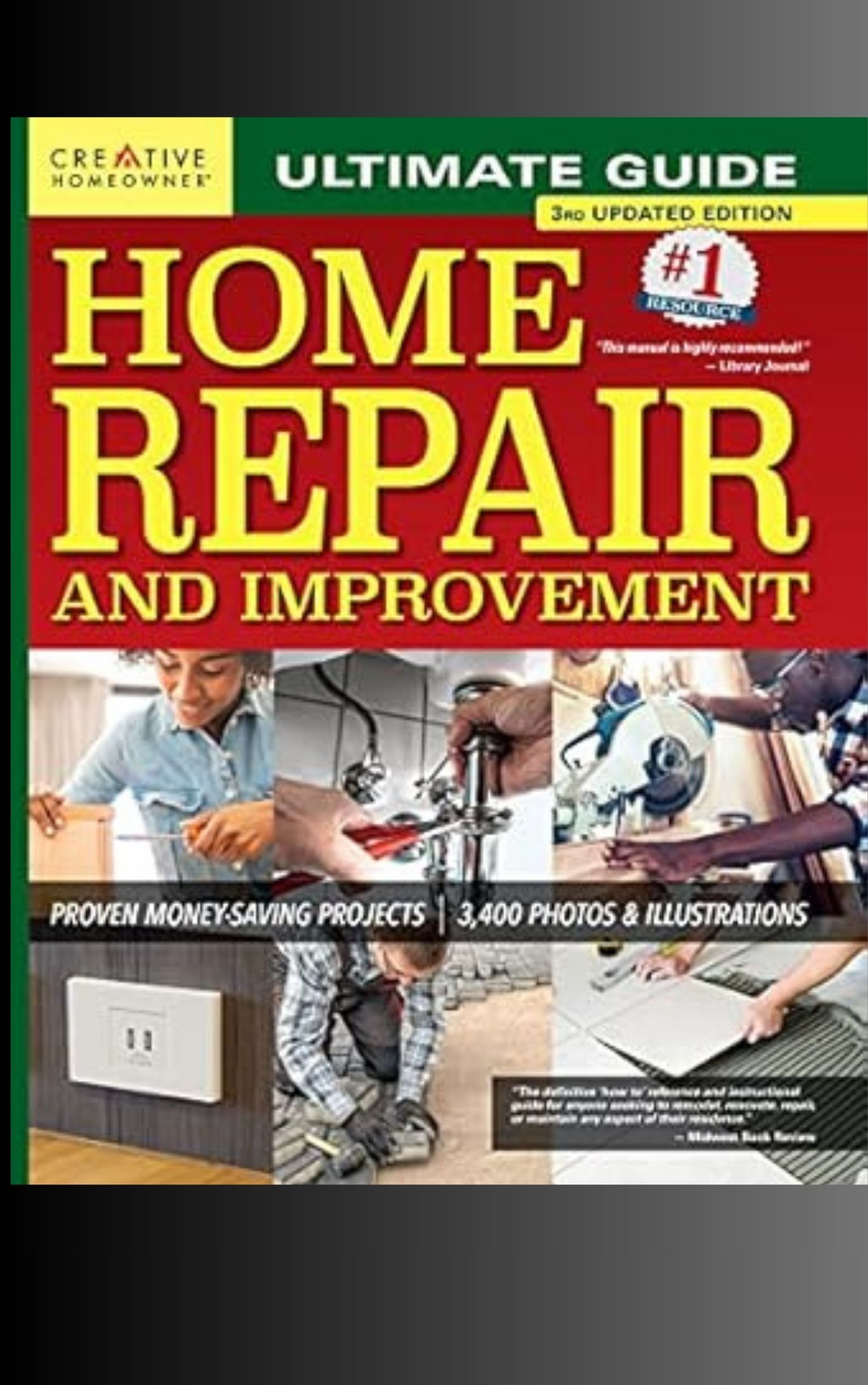Managing renovation dust and debris on a budget involves several practical strategies. Plastic sheeting barriers create temporary walls to contain particles, while DIY air filtration systems using HEPA filters and box fans help purify the air. Strategic furniture protection and efficient clean-up techniques, like using HEPA-filtered vacuums and damp cleaning methods, minimize dust spread. Proper ventilation strategies, including cross-ventilation and portable air scrubbers, improve air quality. Establishing containment zones with designated clean areas helps control debris. Personal protective equipment safeguards workers' health throughout the process. These cost-effective solutions can significantly reduce dust and debris, ensuring a cleaner renovation experience. Further exploration of these methods can enhance your dust management approach.
Plastic Sheeting Barriers
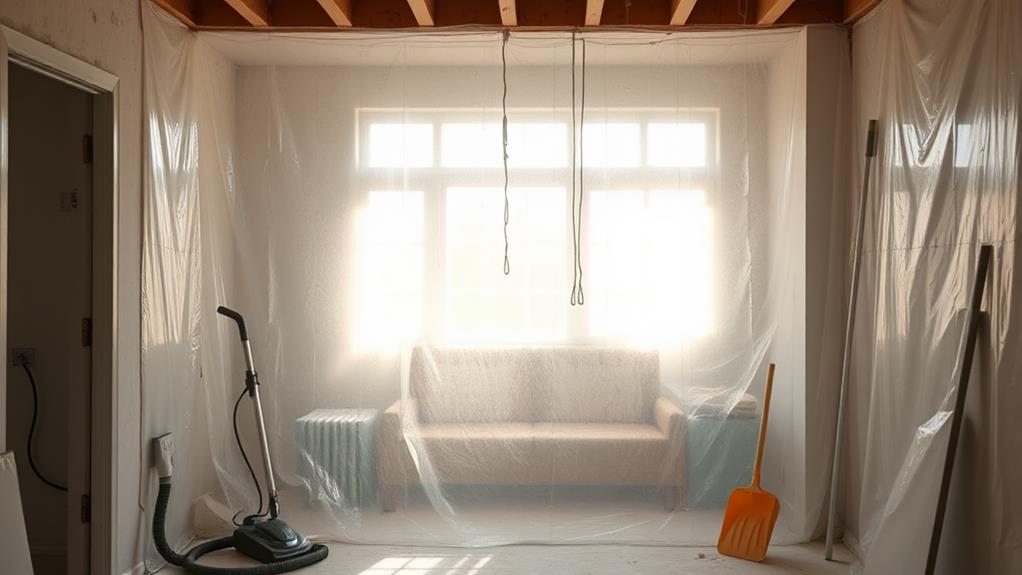
How can you effectively contain renovation dust and debris? One of the most cost-effective methods is using plastic sheeting barriers. These lightweight, disposable sheets create temporary walls that separate work areas from clean spaces, preventing dust and particles from spreading throughout your home.
To set up plastic sheeting barriers, start by measuring the area you need to cover. Purchase heavy-duty plastic sheeting from a hardware store, ensuring it's thick enough to withstand potential tears. Cut the sheeting to size, leaving extra length for secure attachment. Use painter's tape or masking tape to affix the sheeting to walls, ceilings, and floors, creating a tight seal.
For doorways, create overlapping flaps that allow easy access while maintaining a dust barrier. Consider using zipper-style plastic doors for frequently used entrances. Reinforce corners and high-traffic areas with additional tape to prevent tearing. For added protection, create a double barrier by hanging two layers of sheeting with a small gap between them.
Remember to extend the sheeting beyond the work area to catch any escaping dust. Regularly inspect and repair any tears or gaps to maintain the barrier's effectiveness throughout the renovation process.
DIY Air Filtration Systems
Several effective DIY air filtration systems can complement plastic sheeting barriers in containing renovation dust and debris. One simple method involves attaching a high-efficiency particulate air (HEPA) filter to a box fan. This setup can effectively capture airborne particles, including fine dust, pollen, and allergens. To create this system, secure the HEPA filter to the intake side of the fan using tape or bungee cords, ensuring a tight seal.
Another DIY option is the "corsi-rosenthal box," which uses multiple filters arranged in a cube formation around a box fan. This design increases the surface area for filtration, improving overall efficiency. To construct this, attach four or five MERV-13 filters to the sides of a cardboard box, with the fan mounted on top, blowing outward.
For smaller spaces, consider creating a portable air purifier using a five-gallon bucket, a small fan, and a round HEPA filter. Cut holes in the bucket lid for the fan and filter, then assemble the components. This compact system can be easily moved between rooms as needed during renovation work.
Strategic Furniture Protection
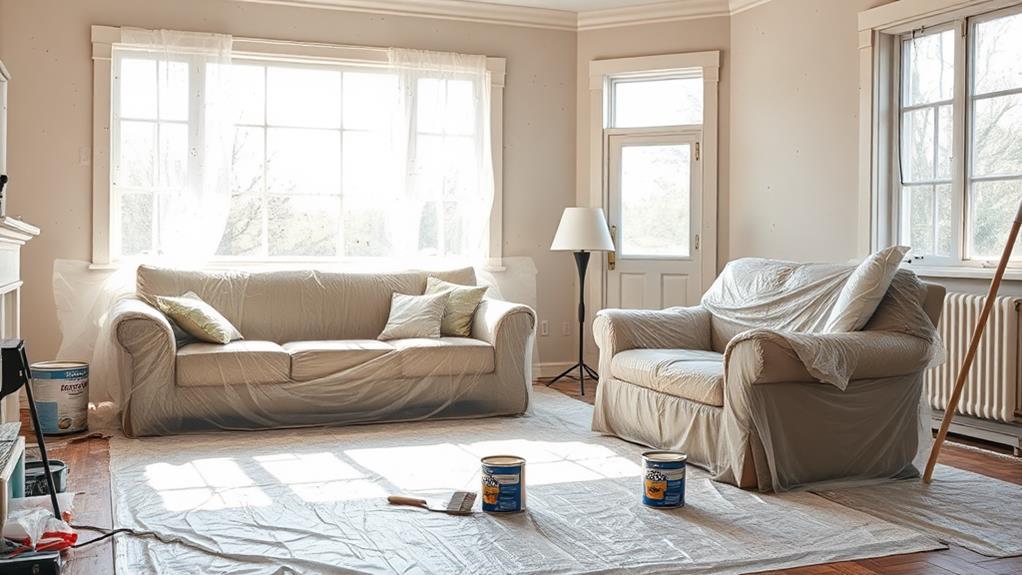
Renovation's disruptive nature necessitates strategic furniture protection to safeguard valuable items from dust and debris. Implementing cost-effective measures can significantly reduce the risk of damage to furniture and belongings during home improvement projects.
Start by clearing the renovation area of all movable items. For furniture that cannot be relocated, employ protective covers. Large plastic sheets or drop cloths serve as economical alternatives to specialized furniture covers. Secure these tightly with painter's tape to prevent dust infiltration. For upholstered items, consider using breathable fabric covers to avoid moisture buildup.
Create physical barriers between work zones and living spaces using plastic sheeting or temporary walls. This containment strategy minimizes the spread of dust throughout the home. For smaller items, utilize storage containers or vacuum-sealed bags to provide an extra layer of protection.
Don't overlook electronics and appliances. Cover these with plastic sheeting, ensuring vents remain unobstructed to prevent overheating. For delicate items like chandeliers or artwork, construct custom cardboard boxes or use bubble wrap for added protection.
Efficient Clean-Up Techniques
With furniture and belongings adequately protected, attention turns to managing the inevitable dust and debris generated during renovation. Efficient clean-up techniques are crucial for maintaining a safe and manageable work environment throughout the project.
Start by containing the mess at its source. Use plastic sheeting to create temporary barriers around work areas, and seal off air vents to prevent dust from spreading. Invest in a high-quality shop vacuum with HEPA filtration for daily clean-up, focusing on both horizontal and vertical surfaces. For larger debris, use a wide push broom and dustpan to quickly clear floors.
Damp cleaning methods are highly effective for capturing fine dust particles. Use microfiber mops and cloths dampened with water or a mild cleaning solution to wipe down surfaces. For stubborn dust, a tack cloth can be invaluable. When possible, work from top to bottom, starting with ceilings and walls before moving to floors.
Establish a regular cleaning schedule, ideally at the end of each workday. This prevents dust accumulation and maintains a cleaner, safer workspace. For extensive renovations, consider renting an air scrubber to filter airborne particles continuously.
Ventilation Strategies
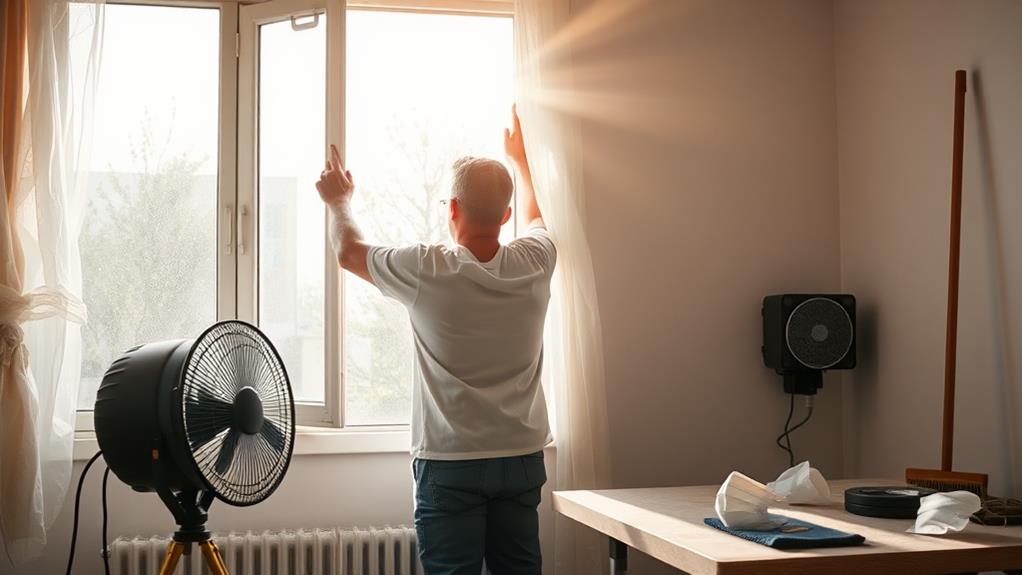
Proper ventilation plays a crucial role in managing renovation dust and debris, promoting both safety and comfort during the project. To implement effective ventilation strategies, start by opening windows and doors to create cross-ventilation, allowing fresh air to circulate and push out dust-laden air. Use box fans positioned in windows, facing outward, to expel contaminated air while drawing in clean air from other openings.
For more targeted ventilation, employ negative air pressure techniques. Place an exhaust fan in the renovation area, directing air out through a window or door. This creates a slight vacuum, preventing dust from spreading to other parts of the building. Seal off non-work areas with plastic sheeting to enhance this effect.
Consider renting or purchasing portable air scrubbers, which filter particles from the air and improve overall air quality. Place these devices strategically in work zones and adjacent areas. For prolonged or large-scale projects, invest in a HEPA air filtration system to capture fine particles effectively. Remember to change filters regularly in all ventilation equipment to maintain optimal performance and ensure continued dust control throughout the renovation process.
Containment Zones and Workflow
Establishing effective containment zones and implementing a well-planned workflow are essential steps in managing renovation dust and debris. Start by identifying and sealing off work areas using plastic sheeting and tape, creating physical barriers between renovation spaces and the rest of the property. Install zipper doors or flaps for easy access while maintaining containment integrity.
Develop a systematic workflow that minimizes the spread of dust and debris. Begin renovations in areas furthest from the building's entrance, progressing towards the exit. This approach prevents contamination of already cleaned areas. Designate clean zones for material storage and tool preparation, separate from active work areas. Implement a "clean as you go" policy, regularly removing debris and vacuuming dust to prevent accumulation.
Use portable air scrubbers with HEPA filters to capture airborne particles within containment zones. Position them strategically to create negative air pressure, preventing dust from escaping. Establish decontamination areas at zone exits, including sticky mats and designated spaces for removing protective gear. Train all workers on proper containment procedures and workflow protocols to ensure consistent adherence throughout the renovation process.
Personal Protective Equipment
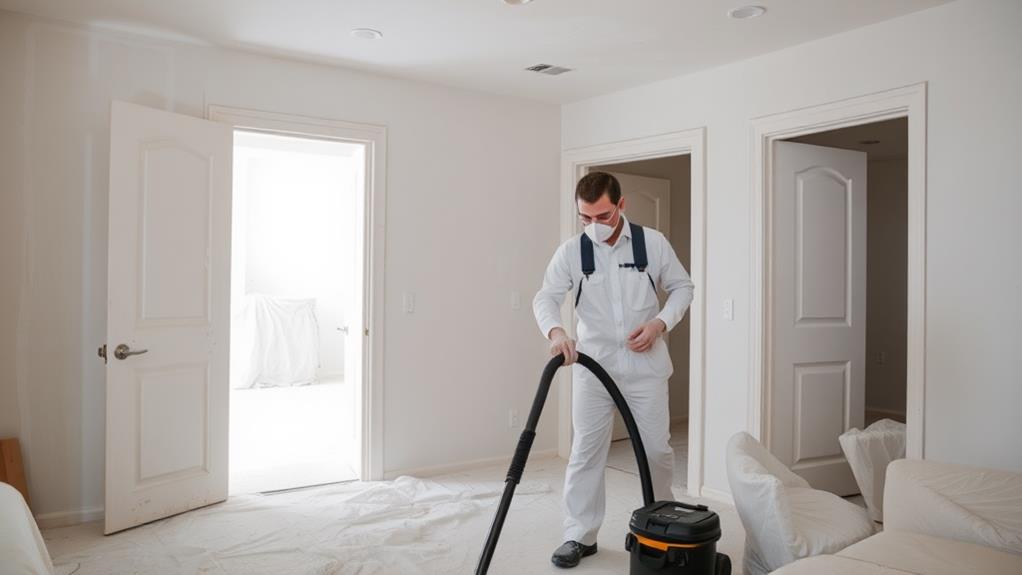
Safeguarding workers' health during renovation projects requires appropriate personal protective equipment (PPE). Essential items include respiratory protection, eye protection, and protective clothing. For respiratory safety, N95 masks or respirators are crucial to filter out dust particles and potentially harmful substances.
Safety goggles or face shields protect the eyes from debris and chemical splashes. Disposable coveralls or dedicated work clothes prevent dust from clinging to personal attire and reduce the risk of contamination outside the work area.
Gloves are necessary to protect hands from abrasive materials, chemicals, and sharp objects. Choose gloves based on the specific tasks and materials involved. For budget-conscious renovators, disposable nitrile gloves offer versatility and affordability. Sturdy work boots with non-slip soles and steel toes provide foot protection and stability on uneven surfaces. When working at heights, fall protection equipment such as harnesses and lanyards is essential.
To maximize cost-effectiveness, consider purchasing PPE in bulk or exploring rental options for specialized equipment. Proper maintenance and storage of reusable PPE items can extend their lifespan and reduce long-term expenses. Regular inspection and replacement of worn or damaged PPE ensure continued protection throughout the renovation process.
Frequently Asked Questions
How Long Does Renovation Dust Typically Linger in the Air After Completion?
Renovation dust can linger in the air for several days to weeks after completion, depending on factors like ventilation, cleanup methods, and particle size. Proper air filtration and thorough cleaning can significantly reduce lingering dust particles.
Can Renovation Dust Affect Pets Differently Than Humans?
Shockingly, pets can inhale up to 5 times more dust than humans. Renovation dust can indeed affect pets differently, as their smaller size and lower breathing position make them more susceptible to airborne particles. Respiratory issues and allergies are common concerns.
Are There Specific Plants That Can Help Purify Air During Renovations?
Several plants can help purify air during renovations. Spider plants, peace lilies, and snake plants are effective at removing airborne pollutants. Boston ferns and bamboo palms can also improve air quality by filtering out harmful particles and chemicals.
How Often Should HVAC Filters Be Changed During and After Renovations?
Like a vigilant guardian protecting a castle, HVAC filters shield your home from renovation debris. During renovations, change filters monthly. Post-renovation, revert to the manufacturer's recommended schedule, typically every 3-6 months, to maintain optimal air quality and system efficiency.
What Are the Long-Term Health Effects of Exposure to Renovation Dust?
Long-term exposure to renovation dust can lead to respiratory issues, allergies, and chronic lung diseases. Silica dust may cause silicosis, while lead dust can result in neurological problems. Asbestos exposure risks include lung cancer and mesothelioma.
Conclusion
Ironically, while renovations aim to improve living spaces, they often create chaos through dust and debris. The budget-friendly solutions presented offer a semblance of control in this dusty pandemonium. Yet, as homeowners diligently erect plastic barriers and don protective gear, they unwittingly transform their abodes into makeshift hazmat zones. Nevertheless, these cost-effective strategies prove invaluable in maintaining sanity and cleanliness amidst the renovation storm, ultimately paving the way for the envisioned domestic utopia—once the dust finally settles.
